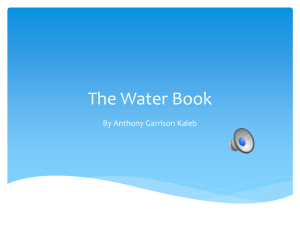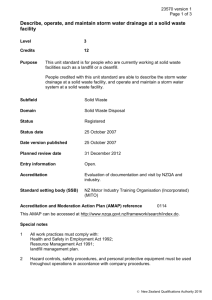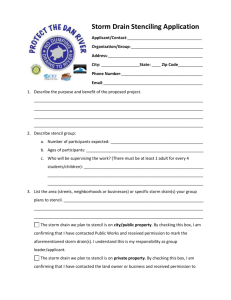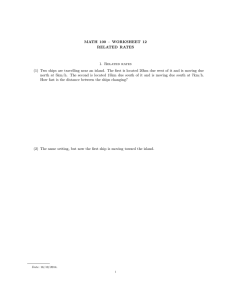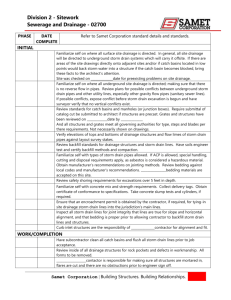BMP D10: Maintenance on Equipment Containing Water (e.g., eyewash showers,
advertisement
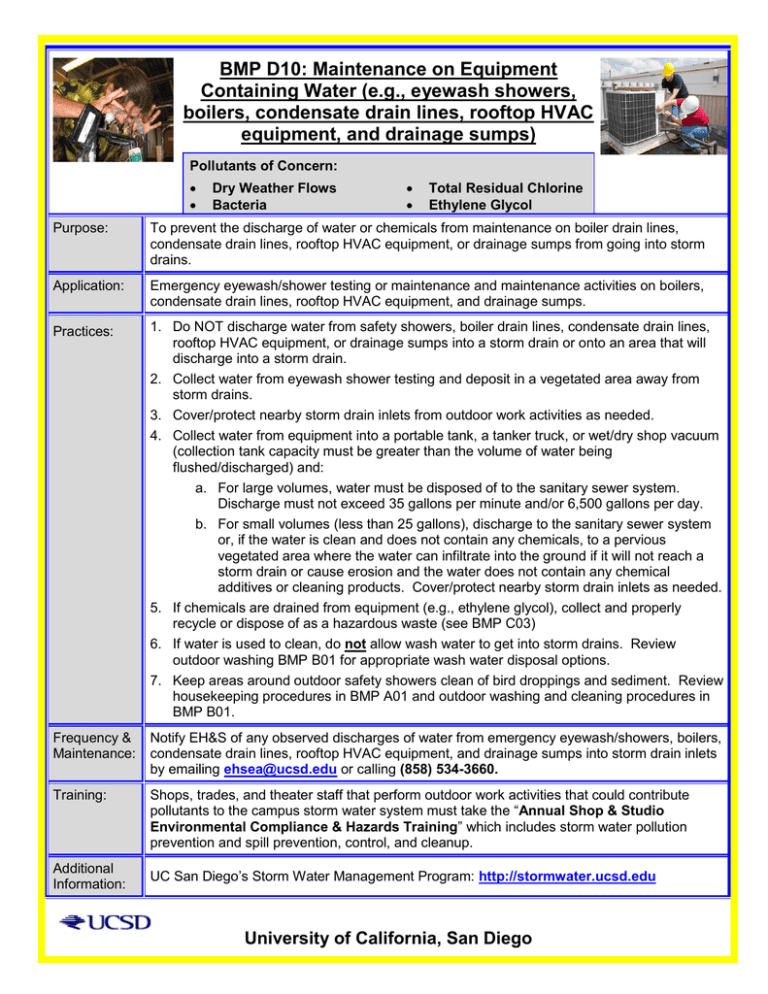
BMP D10: Maintenance on Equipment Containing Water (e.g., eyewash showers, boilers, condensate drain lines, rooftop HVAC equipment, and drainage sumps) Pollutants of Concern: Dry Weather Flows Bacteria Total Residual Chlorine Ethylene Glycol Purpose: To prevent the discharge of water or chemicals from maintenance on boiler drain lines, condensate drain lines, rooftop HVAC equipment, or drainage sumps from going into storm drains. Application: Emergency eyewash/shower testing or maintenance and maintenance activities on boilers, condensate drain lines, rooftop HVAC equipment, and drainage sumps. Practices: 1. Do NOT discharge water from safety showers, boiler drain lines, condensate drain lines, rooftop HVAC equipment, or drainage sumps into a storm drain or onto an area that will discharge into a storm drain. 2. Collect water from eyewash shower testing and deposit in a vegetated area away from storm drains. 3. Cover/protect nearby storm drain inlets from outdoor work activities as needed. 4. Collect water from equipment into a portable tank, a tanker truck, or wet/dry shop vacuum (collection tank capacity must be greater than the volume of water being flushed/discharged) and: a. For large volumes, water must be disposed of to the sanitary sewer system. Discharge must not exceed 35 gallons per minute and/or 6,500 gallons per day. b. For small volumes (less than 25 gallons), discharge to the sanitary sewer system or, if the water is clean and does not contain any chemicals, to a pervious vegetated area where the water can infiltrate into the ground if it will not reach a storm drain or cause erosion and the water does not contain any chemical additives or cleaning products. Cover/protect nearby storm drain inlets as needed. 5. If chemicals are drained from equipment (e.g., ethylene glycol), collect and properly recycle or dispose of as a hazardous waste (see BMP C03) 6. If water is used to clean, do not allow wash water to get into storm drains. Review outdoor washing BMP B01 for appropriate wash water disposal options. 7. Keep areas around outdoor safety showers clean of bird droppings and sediment. Review housekeeping procedures in BMP A01 and outdoor washing and cleaning procedures in BMP B01. Frequency & Maintenance: Notify EH&S of any observed discharges of water from emergency eyewash/showers, boilers, condensate drain lines, rooftop HVAC equipment, and drainage sumps into storm drain inlets by emailing ehsea@ucsd.edu or calling (858) 534-3660. Training: Shops, trades, and theater staff that perform outdoor work activities that could contribute pollutants to the campus storm water system must take the “Annual Shop & Studio Environmental Compliance & Hazards Training” which includes storm water pollution prevention and spill prevention, control, and cleanup. Additional Information: UC San Diego’s Storm Water Management Program: http://stormwater.ucsd.edu University of California, San Diego
